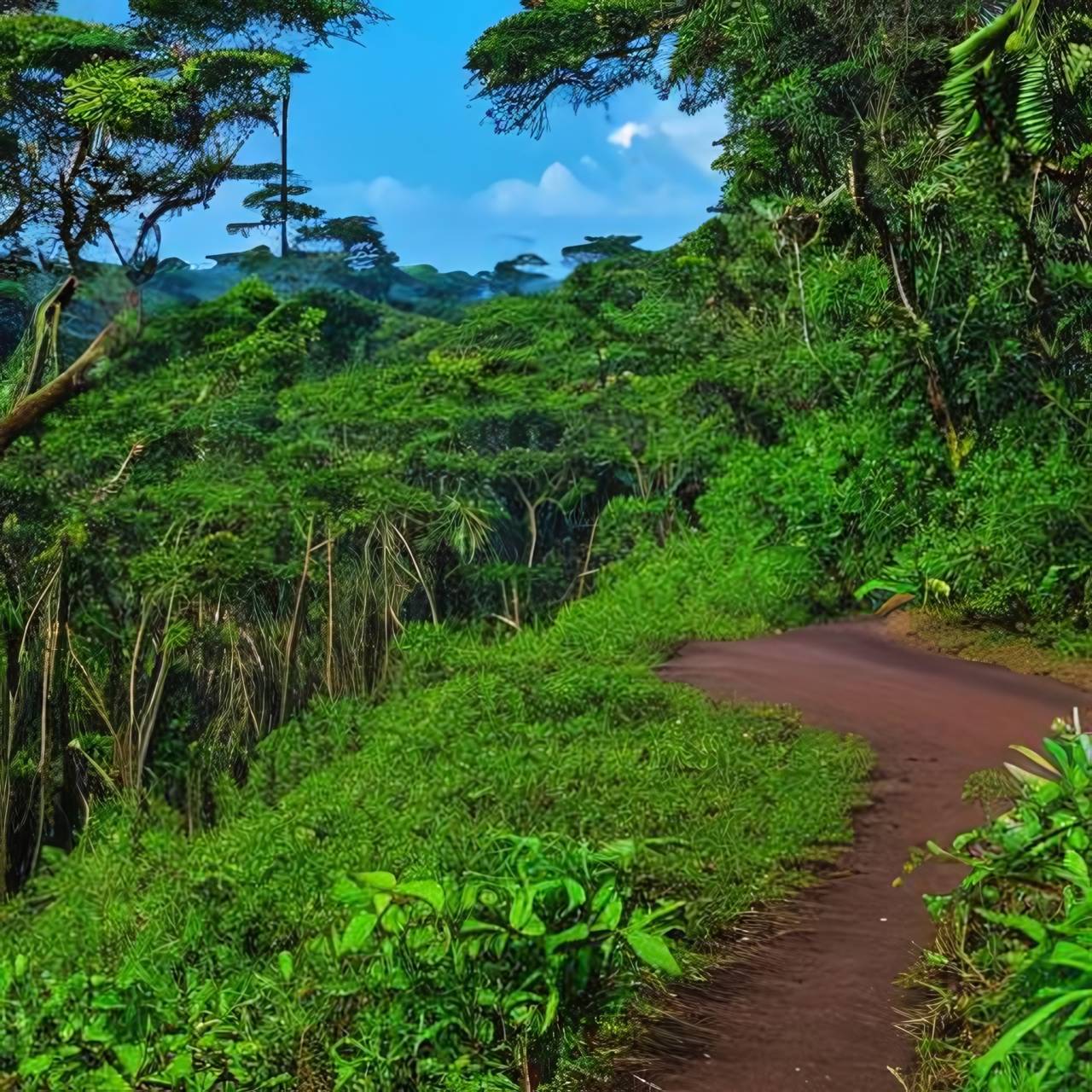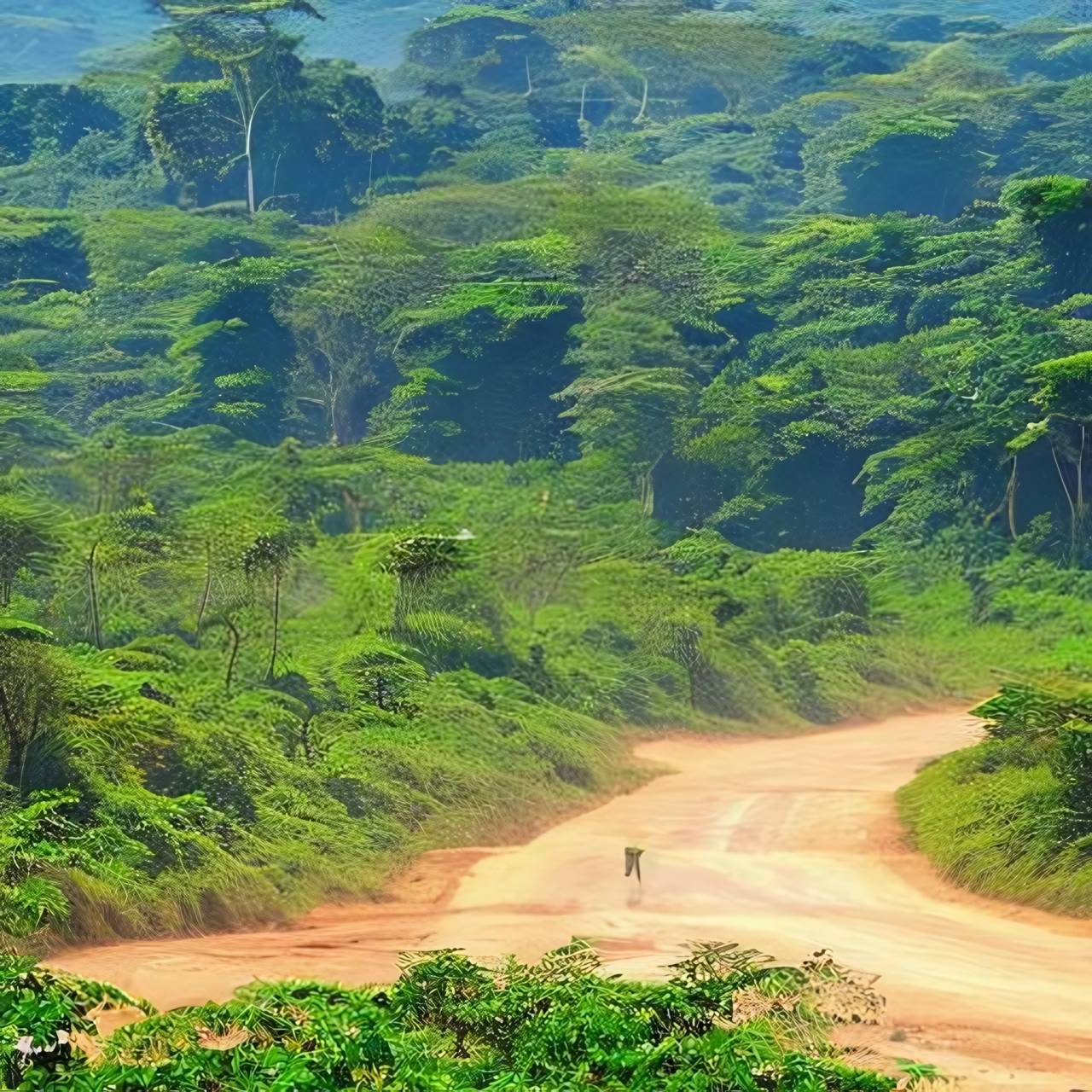Lopé National Park is a UNESCO World Heritage Site located in the central part of Gabon, a country in Central Africa. It is one of the oldest national parks in Africa, established in 1946 as a wildlife reserve. The park covers an area of about 5,000 square kilometres, and contains a unique ecosystem that combines dense tropical rainforest and relict savannah environments. The park is home to a great diversity of species, including endangered large mammals such as forest elephants, western lowland gorillas, chimpanzees and mandrills. It also preserves a rich cultural heritage, with evidence of human settlement dating back to 400,000 years ago. The park contains numerous archaeological sites, iron-working remains and rock carvings that reflect the migration and diffusion of peoples and languages in sub-Saharan Africa.
In this blog post, I will focus on some of the new species discoveries that were made in Lopé National Park in the year 2014. These discoveries illustrate the biological and evolutionary processes that have shaped the biodiversity of this remarkable site.
A New Malaria Mosquito Species
One of the most surprising discoveries was a new species of mosquito belonging to the Anopheles gambiae complex, which is the major vector of malaria in Africa. The new species was named Anopheles fontenillei sp.n., after Dr. Didier Fontenille, a renowned entomologist who contributed to the study of malaria vectors in Africa. The new species was discovered during an exploratory survey at Lopé National Park in 2014 and was described and studied by a team of international researchers led by Dr. Josefa González from the Institute of Evolutionary Biology (CSIC-UPF) in Barcelona, Spain.
The researchers used morphological, molecular and genomic methods to identify and characterize the new species. They found that An. fontenillei sp.n. is closely related to An. gambiae and An. coluzzii, two well-known malaria vectors that are widespread in Africa. However, they also detected important differences between them, such as different patterns of chromosomal inversions, genetic markers and reproductive isolation mechanisms. The researchers also revealed that An. fontenillei sp.n. has experienced recent introgression events with An. gambiae and An. coluzzii, meaning that some genes have been exchanged between them through hybridization. Interestingly, some of these genes are directly involved in vectorial capacity, such as those related to insecticide resistance, host preference and parasite susceptibility.
The discovery of An. fontenillei sp.n. has important implications for understanding the evolution and ecology of malaria vectors in Africa. It shows that the Anopheles gambiae complex is more diverse and dynamic than previously thought, and that new species can emerge and adapt rapidly to changing environmental conditions. It also suggests that introgression can play a role in enhancing or reducing vectorial capacity, depending on the genes involved and the selective pressures acting on them. The researchers emphasized the need for more studies on the distribution, ecology and epidemiology of An. fontenillei sp.n., as well as its potential impact on malaria transmission and control.
The study was published in Scientific Reports, an open-access journal from Nature Research.
A New Begonia Species
Another new species discovery was a new begonia plant belonging to section Loasibegonia, which is endemic to Central Africa. The new species was named Begonia lopensis sp.n., after Lopé National Park where it was found. The new species was described by Drs. Marc S.M. Sosef and Maria E.Leal from the Biosystematics Group at Nationaal Herbarium Nederland (Wageningen University Branch) in Wageningen, The Netherlands.
The researchers collected specimens of Begonia lopensis sp.n. from two locations within Lopé National Park: one near a waterfall along the River Ogooué, and another near a stream at the base of Mount Brazza. They compared them with other begonia species from section Loasibegonia using morphological and molecular data. They found that Begonia lopensis sp.n. is distinct from other species by its combination of characters such as leaf shape and size, flower color and shape, fruit shape and size, seed morphology and chromosome number.
Begonia lopensis sp.n. is a perennial herbaceous plant that grows on rocks or soil near streams or waterfalls in shady forest habitats. It has ovate to elliptic leaves that are dark green above and red below, with white spots along the veins. It has pink flowers that are arranged in axillary cymes or solitary on long peduncles. It has trilocular capsules that are ellipsoid to obovoid, with winged angles and numerous small seeds.
The discovery of Begonia lopensis sp.n. adds to the diversity and endemism of begonias in Central Africa, which are poorly known and under threat from habitat loss and degradation. The researchers recommended further exploration and conservation efforts for this group of plants.
The study was published in Novitates Gabonenses, a journal dedicated to botanical research on Gabon.
New Frog Species
Two new frog species belonging to the genus Phrynobatrachus were also discovered in 2014 by a team of researchers led by Dr.Mark-Oliver Rödel from Museum für Naturkunde (Leibniz Institute for Evolution and Biodiversity Science) in Berlin, Germany.
The new species were named Phrynobatrachus horsti sp.nov., after Dr.Horst Wilkens who supported African amphibian research for many years; and Phrynobatrachus mayokoensis sp.nov., after Mayoko town near which it was found.
The researchers collected specimens of both new species from different locations within Lopé National Park: P.horsti sp.nov.from near Mount Brazza; P.mayokoensis sp.nov.from near Mayoko town.They compared them with other Phrynobatrachus species using morphological data.They found that both new species are distinct from other congeners by their combination of characters such as body size and shape,coloration,patterns,toe webbing,and advertisement calls.
P.horsti sp.nov.is a small frog with a compact body,a warty skin,and no pedal webbing.It has a dark brown dorsum with irregular black spots,a yellowish belly with black dots,and a conspicuous black triangle on throat.It has an advertisement call consisting of short notes repeated at regular intervals.P.mayokoensis sp.nov.is also a small frog with a compact body,a warty skin,and no pedal webbing.It has a dark brown dorsum with irregular black spots,a white belly with black dots,and a distinct large red blotch on the anterior-proximal surface of thighs.It has an advertisement call consisting of long notes repeated at irregular intervals.
The discovery of P.horsti sp.nov.and P.mayokoensis sp.nov.contributes to the knowledge and conservation of amphibians in Central Africa.They are both endemic to Lopé National Park,and their distribution,microhabitat preferences,and population status are unknown.The researchers suggested more surveys and monitoring for these species,and their potential threats,such as habitat loss,disease,and climate change.
The study was published in Zootaxa, a peer-reviewed journal for animal taxonomists.
New Snake Species
A new snake species belonging to the genus Atractaspis was also discovered in 2014 by Dr.Olivier Pauwels from Royal Belgian Institute of Natural Sciences (RBINS)in Brussels,Belgium.
The new species was named Atractaspis leucomelas sp.nov., after its distinctive black-and-white coloration. The new species was discovered during an expedition at Lopé National Park in 2014,and was described based on two specimens collected near Mount Brazza.The researcher compared it with other Atractaspis species using morphological data. He found that A.leucomelas sp.nov.is distinct from other congeners by its combination of characters such as scale counts, color pattern, dentition and hemipenis morphology.
A.leucomelas sp.nov.is a small snake with a cylindrical body, a short tail, and smooth scales. It has a black dorsum with white crossbars, a white venter with black dots, and a black head with white markings. It has enlarged fangs at the posterior end of its maxilla, and an erectile hemipenis with numerous spines. It belongs to the group of burrowing asps or stiletto snakes (Atractaspididae), which are venomous snakes that can inflict painful bites by stabbing their fangs sideways without opening their mouth. They feed mainly on fossorial rodents, insects and other snakes.
The discovery of A.leucomelas sp.nov. adds to the diversity and endemism of snakes in Central Africa. It is only known from Lopé National Park and its distribution, microhabitat preferences and population status are unknown. The researcher recommended further exploration and conservation efforts for this group of snakes, and their potential threats, such as habitat loss, collection, and road mortality.
The study was published in African Journal of Herpetology, a journal devoted to African herpetology.
Conclusion
Lopé National Park is a treasure trove of biodiversity and culture that deserves more attention and protection. The new species discoveries made in 2014 are just a glimpse of the richness and uniqueness of this site, which harbours many more secrets waiting to be unveiled by curious and passionate researchers. These discoveries also highlight the importance of preserving the natural habitats and the historical heritage of this region, which are threatened by various factors such as deforestation, mining, poaching, and climate change. Lopé National Park is not only a national park, but also a living laboratory and a museum of natural and human history that can teach us valuable lessons about the past, the present, and the future of life on Earth.
References
– Barrón MG et al (2019) A new species in the major malaria vector complex sheds light on reticulated species evolution | Scientific Reports 9:14753 https://www.nature.com/articles/s41598-019-49065-5
– Ecosystem and Relict Cultural Landscape of Lopé-Okanda – UNESCO World Heritage Centre https://whc.unesco.org/en/list/1147
– With a drastic decline in tropical fruit, Gabon’s rainforest mega-gardeners go hungry https://news.mongabay.com/2020/10/with-a-drastic-decline-in-tropical-fruit-gabons-rainforest-mega-gardeners-go-hungry/
– Sosef MSM & Leal ME (2014) Novitates Gabonenses 41: A new Begonia species from Lopé Reserve (Gabon) https://www.academia.edu/77337652/Novitates_Gabonenses_41_A_new_Begonia_species_from_the_Lop%C3%A9_Reserve_Gabon_
– Rödel MO et al (2015) Two new Phrynobatrachus species (Amphibia: Anura: Phrynobatrachidae) from the Republic of the Congo | Zootaxa 4032:55-79 https://www.biotaxa.org/Zootaxa/article/view/zootaxa.4032.1.3
– Reptiles and National Parks in Gabon, western Central Africa. https://www.researchgate.net/publication/236233993_Reptiles_and_National_Parks_in_Gabon_western_Central_Africa.
– Novel Candidatus Rickettsia Species Detected in Nostril Tick from Human …. https://wwwnc.cdc.gov/eid/article/21/2/pdfs/14-1048.pdf
– Lopé National Park – Wikipedia. https://en.wikipedia.org/wiki/Lop%C3%A9_National_Park.
– Lopé National Park | Gabon, Africa | Attractions – Lonely Planet. https://www.lonelyplanet.com/gabon/attractions/lope-national-park/a/poi-sig/1558174/355302.
Tags
Divi Meetup 2019, San Francisco
Related Articles
Unappreciated Greatness
Life and Legacy of Jahangir of the Mughal Empire. Jahangir ruled over one of the largest empires in human history during his lifetime, yet few people outside of South Asia have heard of him. I aim to shed light on the life and legacy of this remarkable figure,...
The Plague Doctor’s Diary
A Personal Account of the Turin Epidemic of 1656. I am writing this diary to record my experiences and observations as a plague doctor in Turin, the capital of the Duchy of Savoy, during the terrible epidemic that has afflicted this city and its surroundings since the...
The Timeless Beauty of Bustan
Unveiling the Secrets of Saadi Shirazi's Masterpiece.In the realm of Persian literature, few works have captured the essence of love, spirituality, and morality quite like Bustan (The Orchard) by Saadi Shirazi. This 13th-century masterpiece has left a lasting impact...
Stay Up to Date With The Latest News & Updates
Explore
Browse your topics of interest using our keyword list.
Join Our Newsletter
Sign-up to get an overview of our recent articles handpicked by our editors.
Follow Us
Follow our social media accounts to get instant notifications about our newly published articles.









